Rise of the Habsburg Empire
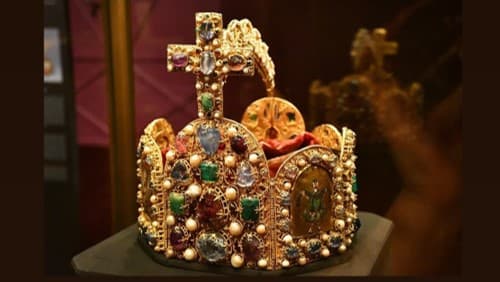
The performances of the Paris 2024 Olympics were shocked and still fresh in our memories. The performance featuring Queen Marie Antoinette was caused controversy on the Internet. The venue was the Conciergerie, located on the west side of the Isle de la Cité, which belongs to the 1st and 4th arrondissements of Paris. The building was once used as a prison for political prisoners, and it is said that as many as 2,600 people were detained here and sent to the guillotine. On the day of the opening ceremony of the Paris 2024 Olympics, the gothic conciergerie on the banks of the Seine was filled with the headless queen standing on the balcony in a red dress and holding her own head in her hands. The head began to sing a cappella, “Ah sa ira” (Come on, it’s going to be fine), which was the cue for the metal band to begin their furious performance.
In this blog, I would like to look back at the basic history of the Habsburgs, the family that Maria Theresa, the mother of Marie Antoinette who tragically died, reigned as Empress.
(Picture: Conciergerie during the Paris 2024 Olympics)
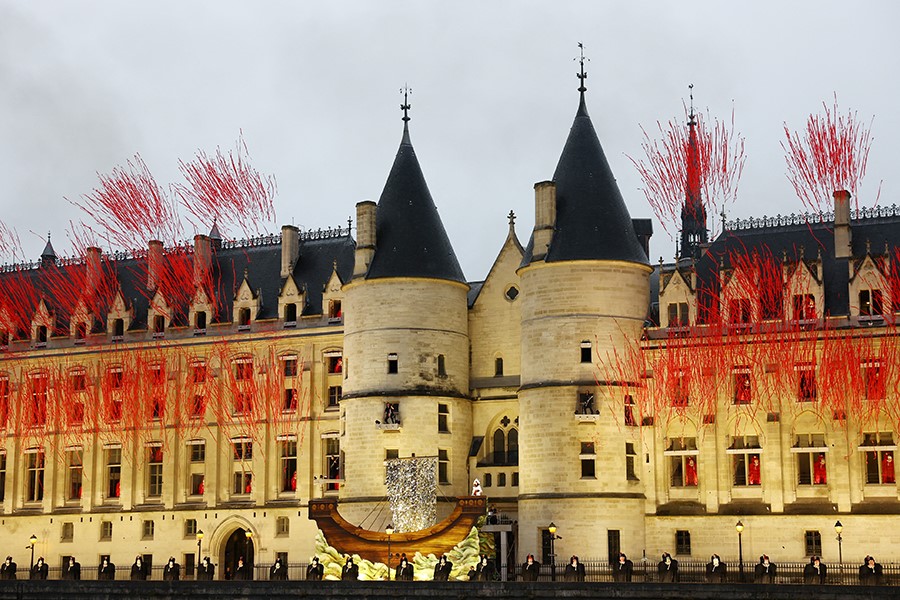
(Reference: Reuters)
The history of the Habsburgs can be traced back to an ancient castle called “Habichtsburg,” meaning “Great Eagle Castle,” built in the center of the canton of Aargau, northwest of the central city of Zurich in Switzerland. It became known as “Habsburg Castle,” and around the beginning of the 12th century, the descendants who lived there took the name “Habsburg”. The castle was typical of German medieval style, which were generally simple in construction and poorly habitable. The high consumption of meat compared to other local places, the iron and glassware and ornaments, and the money held by the Habsburgs suggest that there were social and status differences, but in fact, the standard of living of the castle dwellers and wealthy farmers was not that different, and the Habsburgs’ ancestors are thought to have been a weak Swiss local ruling family.
The Habsburgs came into the spotlight during the period of the Holy Roman Empire, which is born in 962, when the German king, who was recognized as “Roman Emperor” by the Pope, ruled Germany and its surrounding territories. The “Great Vacancy(1256)” meant that for nearly 20 years no emperor was elected because there were no powerful families to succeed the Roman king (the King of Germany). (The Holy Roman Empire continued to function during this period, however, because the princes were still in power.) However, the Habsburgs, who had been active in the Upper Rhine region in southwestern Germany for about 200 years by this time, gradually grew into a powerful force, and in 1273, the 55-year-old Rudolf IV was elected King of Germany (Rudolf I), marking a major turning point in the history of the empire.
However, the then King of the Czech Republic (King of Bohemia) Otakar II (later Archduke of Austria) strongly opposed Rudolf I’s accession to the German throne, and in 1287 the two armies fought at Malchfeld in eastern Austria (Battle on the Malchfeld). The result was a victory for Rudolf I, and the Austrian states passed from the Czech dynasty of Přemysl in Bohemia to the Habsburgs. This led to Vienna, Austria, reigning as the home of the Habsburgs until the 20th century. The fact that they gained ground in the Holy Roman Empire has a lot to do with the long history of the Habsburgs.
(Picture: The Battle on the Malchfeld, by Julius Schnorr von Carolsfeld)
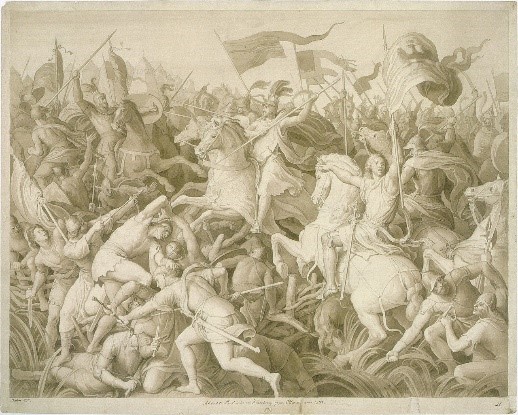
(Reference: Wikipedia)
As an aside, “From the beginning of Austrian rule, the movement of cultivation and settlement weakened, and on the contrary, villages and farmlands were abandoned in many places, leading to the devastation of the land. This is presumed to have been caused by a decline in population due to the combined effects of plague, warfare, climate change, bad harvests, and famine. Among these, the plague, which raged throughout Europe in the 14th century, inflicted tremendous damage on Austria. [Iwasaki17, p.64]” (I believe that there may be a number of similarities between the plague and contemporary society.)
(Figure: Family Tree of the Habsburgs and the Spanish Royal Family)
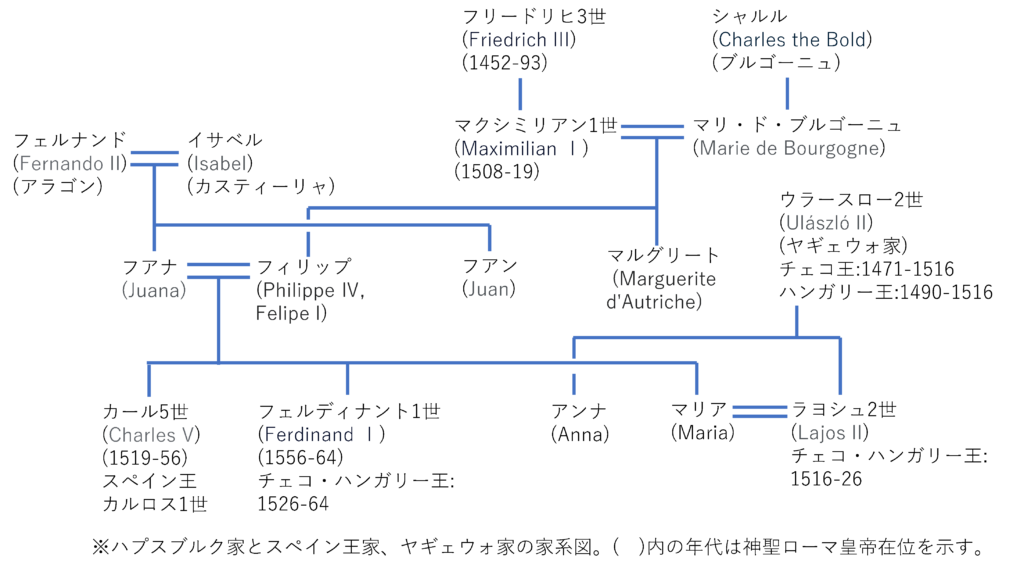
(Reference: Created by the author with reference to [Iwasaki 17, P.82]
Now, a person of historical distinction among the Habsburgs is Maximilian I, the sixth Habsburgs’ king of Rome. It is said that during the reign of Maximilian I, the foundation was laid for the establishment of the “the empire on which the sun never sets” by the Habsburgs. First, Maximilian married Marie, daughter of Charles of Burgundy, and acquired a vast territory stretching from eastern France to the Netherlands. Later, the beginning of the Italian War (a war between France and the Habsburgs), which was intermittently waged for more than 50 years with Italy as the battleground from the end of the 15th century to the middle of the 16th century, led to the Habsburgs’ confrontation with France and the rapid establishment of relations with Spain. Under these circumstances, Maximilian’s son Philip and daughter Marguerite married the Spanish princess Juana and prince Juan, respectively, and in 1497 the two families were united in a double marriage. Twenty years later, Lajos, son of Ulászló II, King of Czech-Hungary of the Jagiellonian House of Central and Eastern Europe, married Maximilian’s granddaughter Maria, and Ulászló’s daughter Anna married Maximilian’s grand son Carl or (Carl’s brother) Ferdinand. It is not difficult to imagine that this was the occasion for the Habsburgs to take control of Czech and Hungary. As described above, the Habsburgs’ “political marriage” greatly contributed to their prosperity during Maximilian’s reign. (However, the line “Let others wage war, but you happy Austria marry, because what Mars gives to others, divine Venus gives to you”, which appears in any study of the Habsburgs’ political marriage, is not the Habsburgs’ motto or family motto. First of all, political marriages were common for the survival and development of the family power in both East and West. It should be noted that the Habsburgs’ political marriage, while of great significance as a result, was no different from that of other families.)
(Painting: Maximilian, eldest son Philip, and wife Mari
Front row from left: Ferdinand Ⅰ, KarlⅤ, Lajos Ⅱ)

(Reference: Wikipedia)
Another major change that began in his time was the division of the House of Habsburgs, which in 1556 was divided into the “Austrian Habsburgs” and the “Spanish Habsburgs”. This was the result of the above-mentioned political marriage of Maximilian I’s grandson, Carl V (who was later said to have held as many as 70 titles). Inherited the Kingdom of Spain as Carlos I at the age of 16 (*Carl V of the Holy Roman Empire and Carlos I of Spain are the same person), then Carlos I decided to abdicate voluntarily at the age of 56, giving his son Felipe the King of Spain (= Spanish Habsburgs), and he gave Austria to Felipe’s brother, Ferdinand (=Austrian Habsburgs). While the Spanish Habsburgs ceased to exist after five generations (in 1700), the Austrian Habsburgs continued to prosper for a long time.
Flying back in time, the Habsburgs’ exchange with our country began at the end of the 19th century. (“The Treaty of Amity and Commerce between the two countries was concluded in 1869, one of the latest among the Western nations. Since this provision was to be applied to all other powers by unilateral MFN treatment, the British Minister Parkes was deeply involved in the conclusion of the treaty (revised in 1912) so that its contents would complement and thoroughly address the inequalities of the various existing treaties.”[Iwasaki17, p.343])
In establishing diplomatic relations, Franz Siebold’s eldest son, Alexander, served as interpreter, and his second son, Heinrich, served at the legation. The brothers also played an important role in the visit of the Iwakura Mission to Austria in 1873, which marked the beginning of full-fledged exchange between the two countries. Also, in the exhibition at the Vienna World’s Fair of the same year, in which Heinrich’s collection of Japanese artifacts formed part of the Japanese section of the Museum of Folklore in Vienna today.
(As a side note, the first official international marriage in Japan was that of Mitsuko Coudenhove (= Mitsu Aoyama) and Heinrich Coudenhove-Kalergi, the deputy minister of the Habsburg Empire (Austria) to Japan, which was registered in Tokyo Prefecture in 1892. I learned that she is considered to be the most famous Japanese person in the EU while I was writing this blog and the fact of this relationship between the Habsburgs and Japan seem even more special to us).
(Picture: Vienna International Exposition of 1873 and Japonisme)
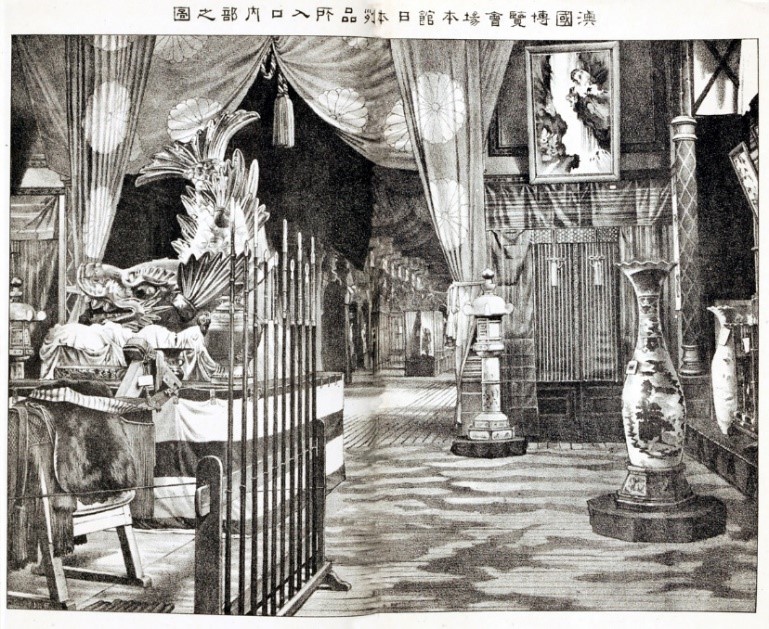
(Reference: Wikipedia)
Furthermore, it is said that the aforementioned Vienna International Exposition was a great opportunity to make Japanese culture widely known, and “the great influence of Gustav Klimt, the Vienna Secession, and Jugendstil (so-called Art Nouveau) is well known. (In addition, the orchestra of Johann Strauss II was active next to the Japan Pavilion, and Hirobumi Ito is said to have considered inviting them to Japan.) Brahms was also interested in Japanese music, and he had a chance to communicate with Ujiko Toda and Kyoko Toda, who were posted to Vienna as his minister. In Budapest, the cafe “Japan” was a lively place for artists to gather [Iwasaki 17, p. 343]. Even in the Habsburg, which had long been regarded as a place barren of literature and art, writers gathered at cafes such as “Zentral” and “Imperial” in Vienna, “Arco” in Prague, and “Japaan” and “New York” in Budapest, and sought a place to publish their works in the literary magazines that were launched one after another.
Even if we go back to the period of Maximilian I, “American political scientist Joseph Nye has described the importance of “soft power,” which is not only based on military and economic power(“hard power”), but also on support and favor for culture and ideals [Iwasaki 17, p.85]. In part to justify their rapid expansion of power, Maximilian and others sought to establish genealogically that the Habsburgs were an ancient and noble family. Maximilian and his colleagues also had a sense of the divine right of election, that the Habsburgs were a chosen and special family entrusted by God with the mission of protecting the Christian world, which was held by monarchs such as Rudolf IV and Friedrich III. Specifically, Maximilian I attempted to preserve the memory of his great deeds in his own words, following in the footsteps of Dürer’s portraits and “Triumphal Arch (woodcut)” and of Julius Caesar’s “Gallic Wars” written by himself in ancient Rome, which were handed down to later generations. The biography “The White King” and the Order of the Golden Fleece, which are believed to be Maximilian’s autobiography, strongly depict his ideas, and as a result, he seems to have implemented a representational strategy to make his power and authority visible.
The Duchy of Burgundy at the border between the Middle Ages and the Early Modern period also saw a high level of culture flourish. The Duchy of Burgundy in the borderland between the Middle Ages and the Early Modern period was a highly developed culture: a courtly and knightly culture of pomp and ceremony, tournaments, masked balls, and dances; a lifestyle culture of openness and open relationships between men and women; high-quality music, art, and literature; and landscaping techniques that were integrated with the château. The rich and colorful culture of Burgundy was enough to astonish the Austrians, including Maximilian. These were incorporated into the culture of the Habsburgs in various forms, and would bear fruit in abundance in the years to come. I am sure that many of you are fond of works of art. In the next blog, I would like to unravel the history of the Habsburgs from the viewpoint of “painting” by such as Velázquez, Manet, Giuseppe Arcimboldo, Mucha, Klimt…etc.
Chancellery Unit, Group for Project Pax Japonica, Maria Tanaka
※The statements in this blog are not the official views of the Institute, but rather the personal views of the author.
[References]
・[Iwasaki17]Syuichi Iwasaki, Habsburg Empire, Kodansha Ltd. Gendai-Shinsho, Inc., 2017.



